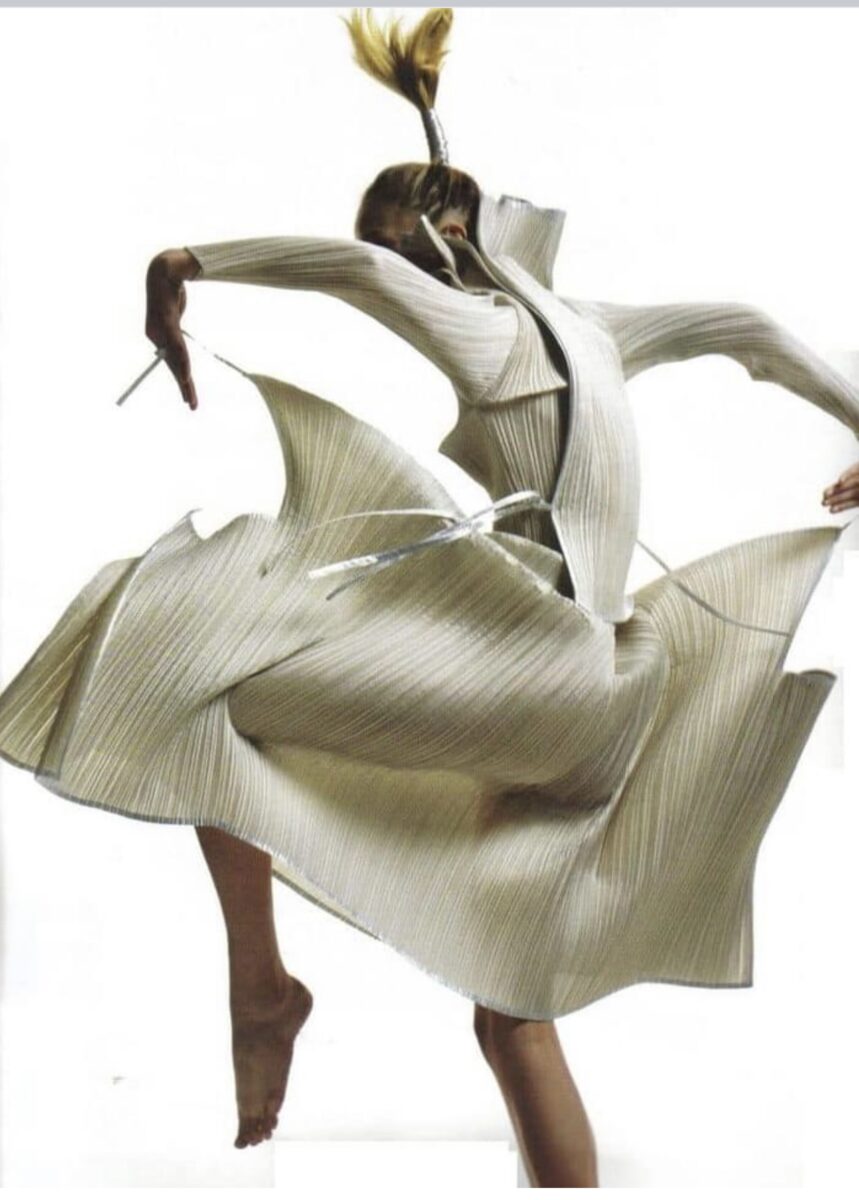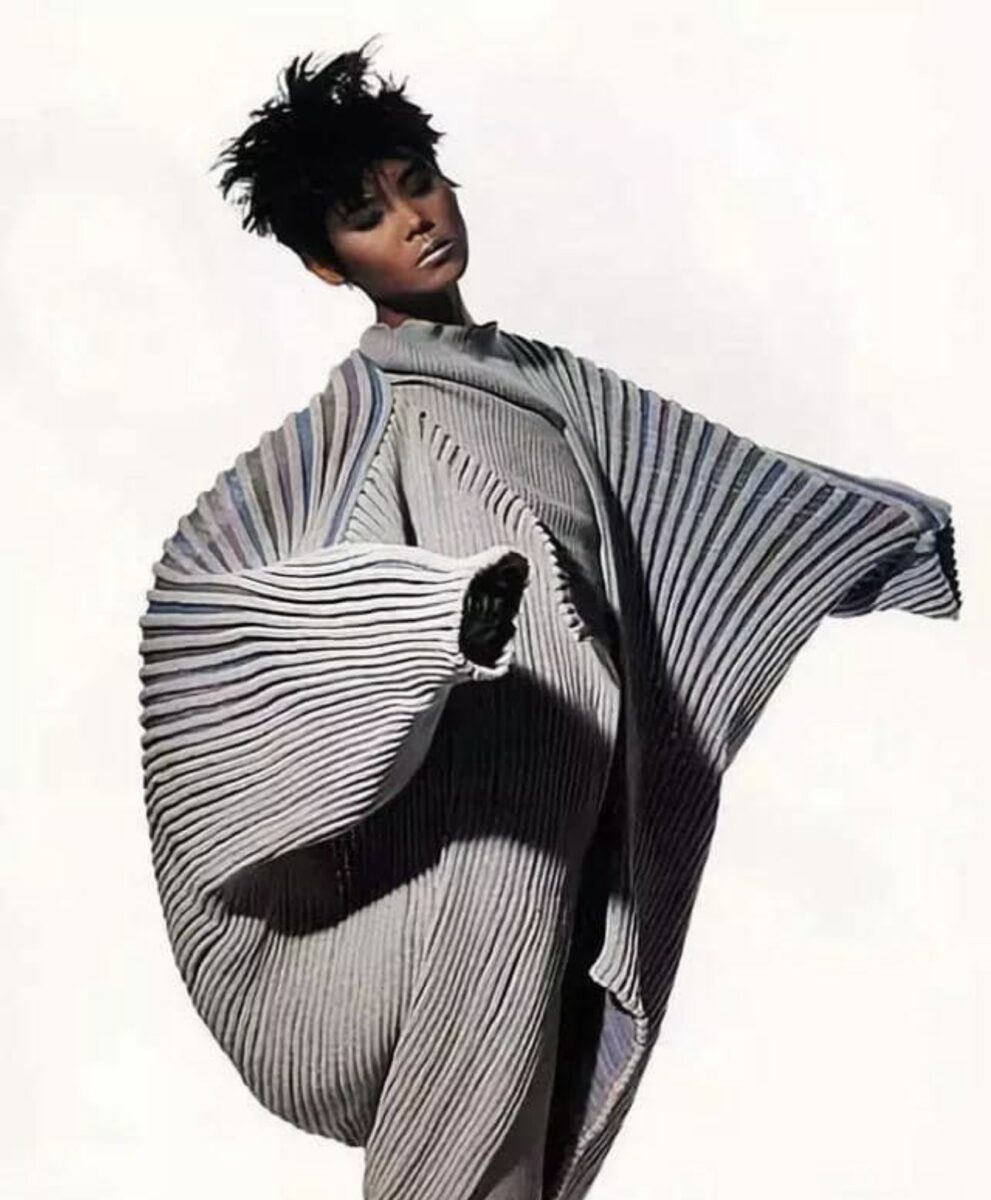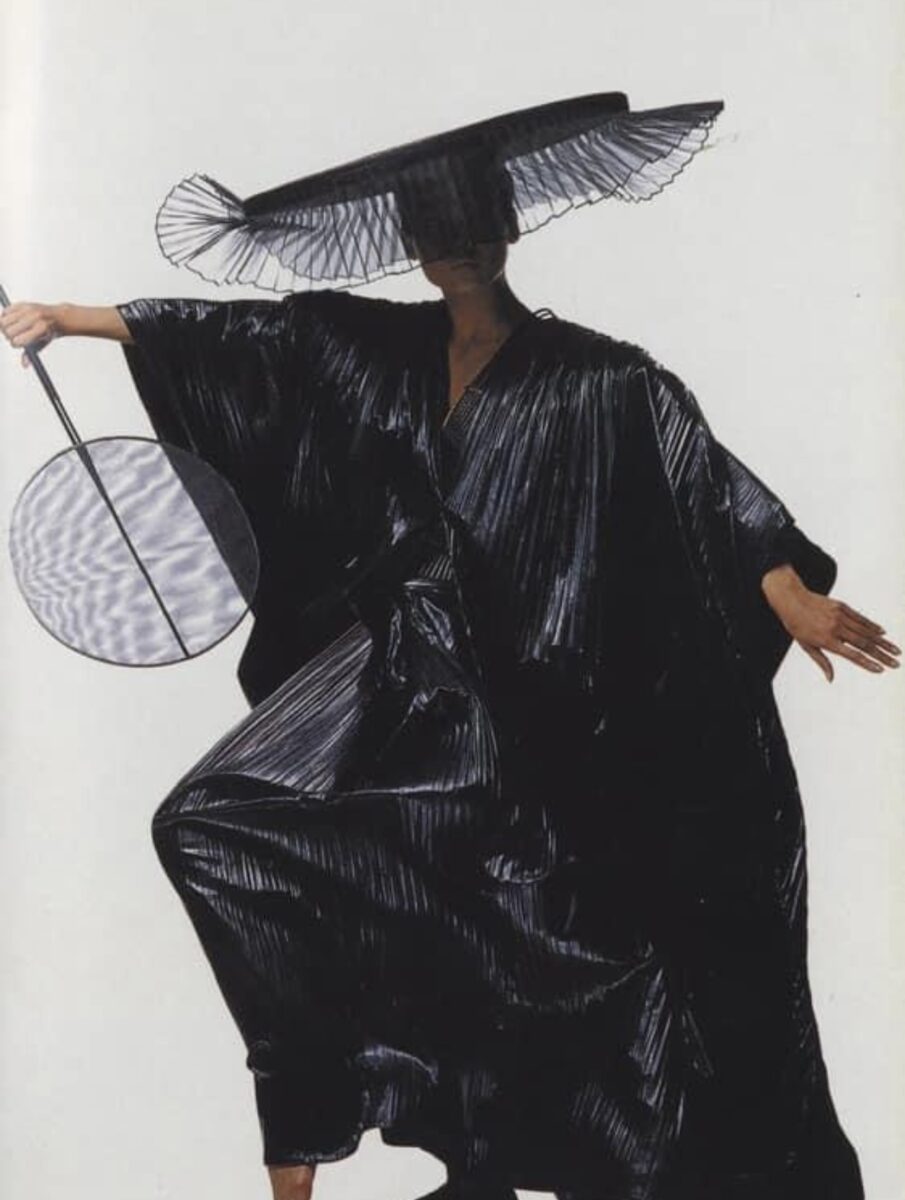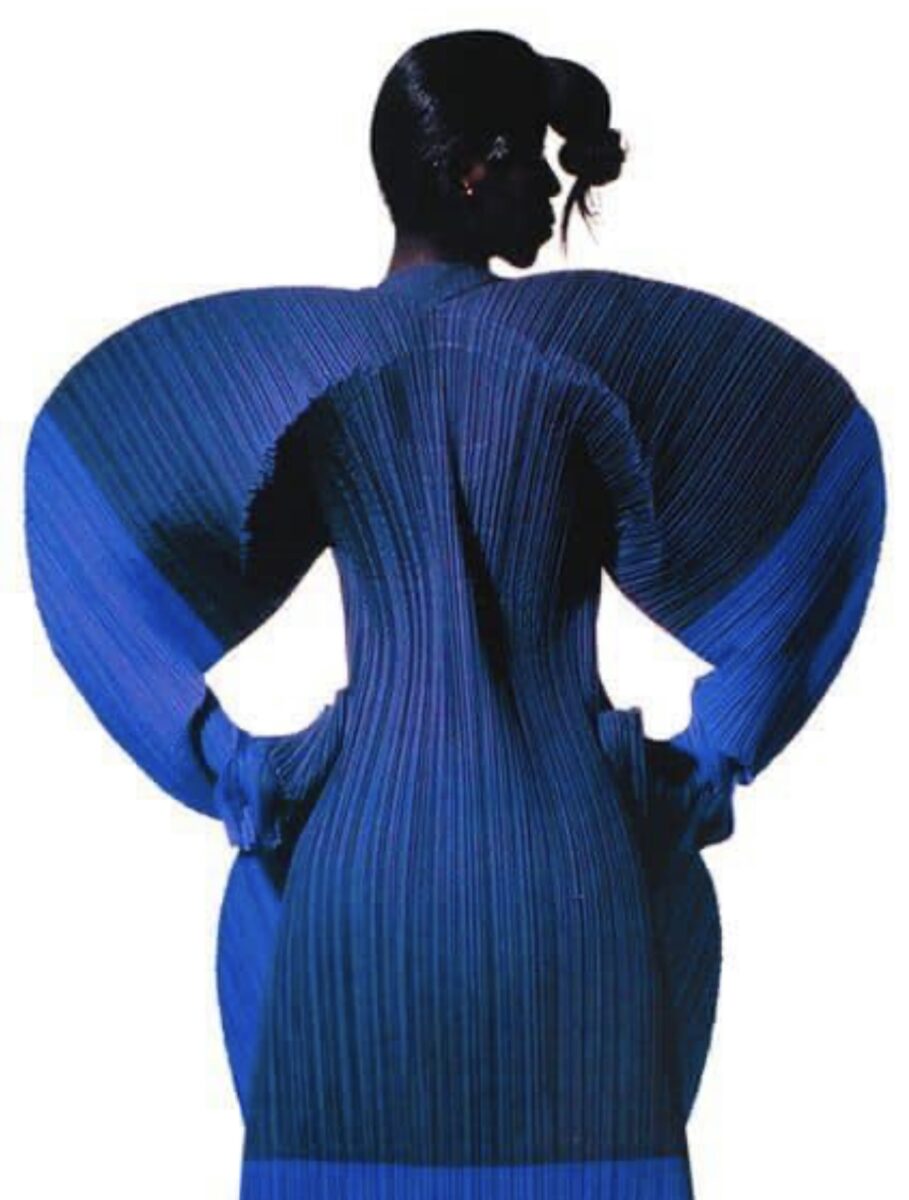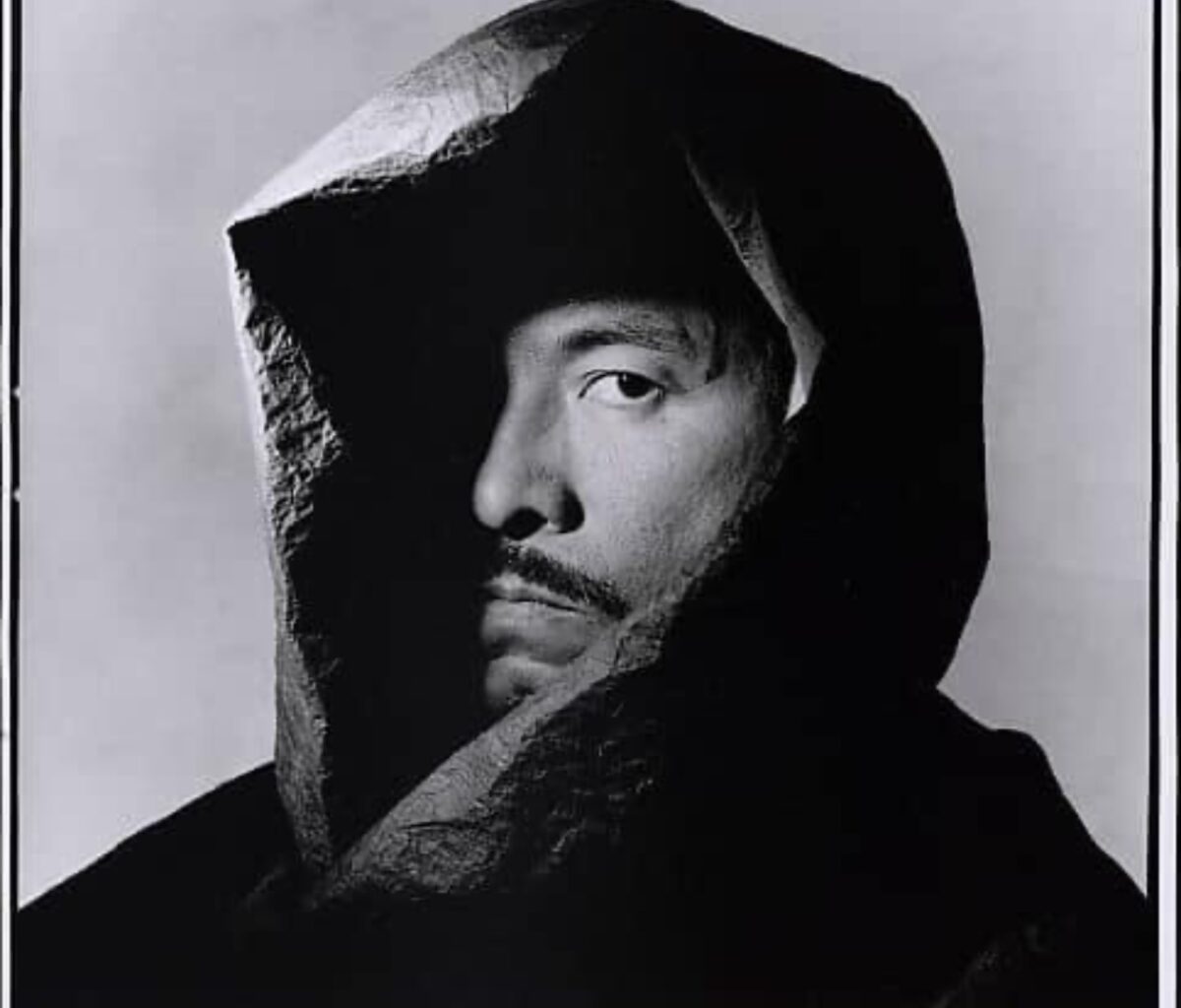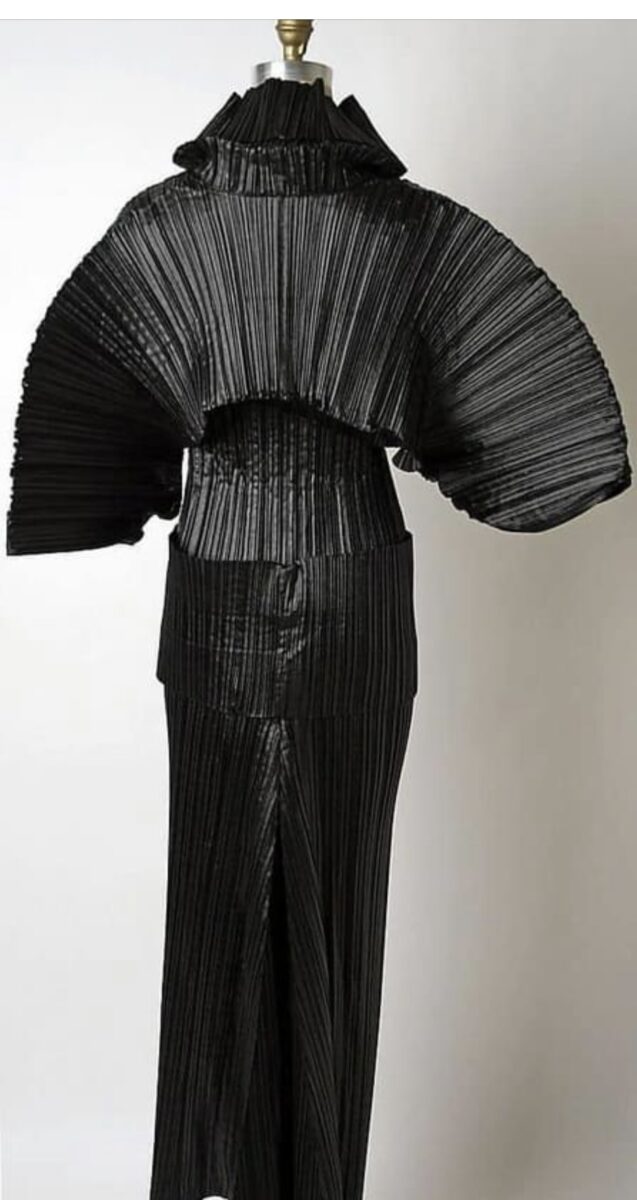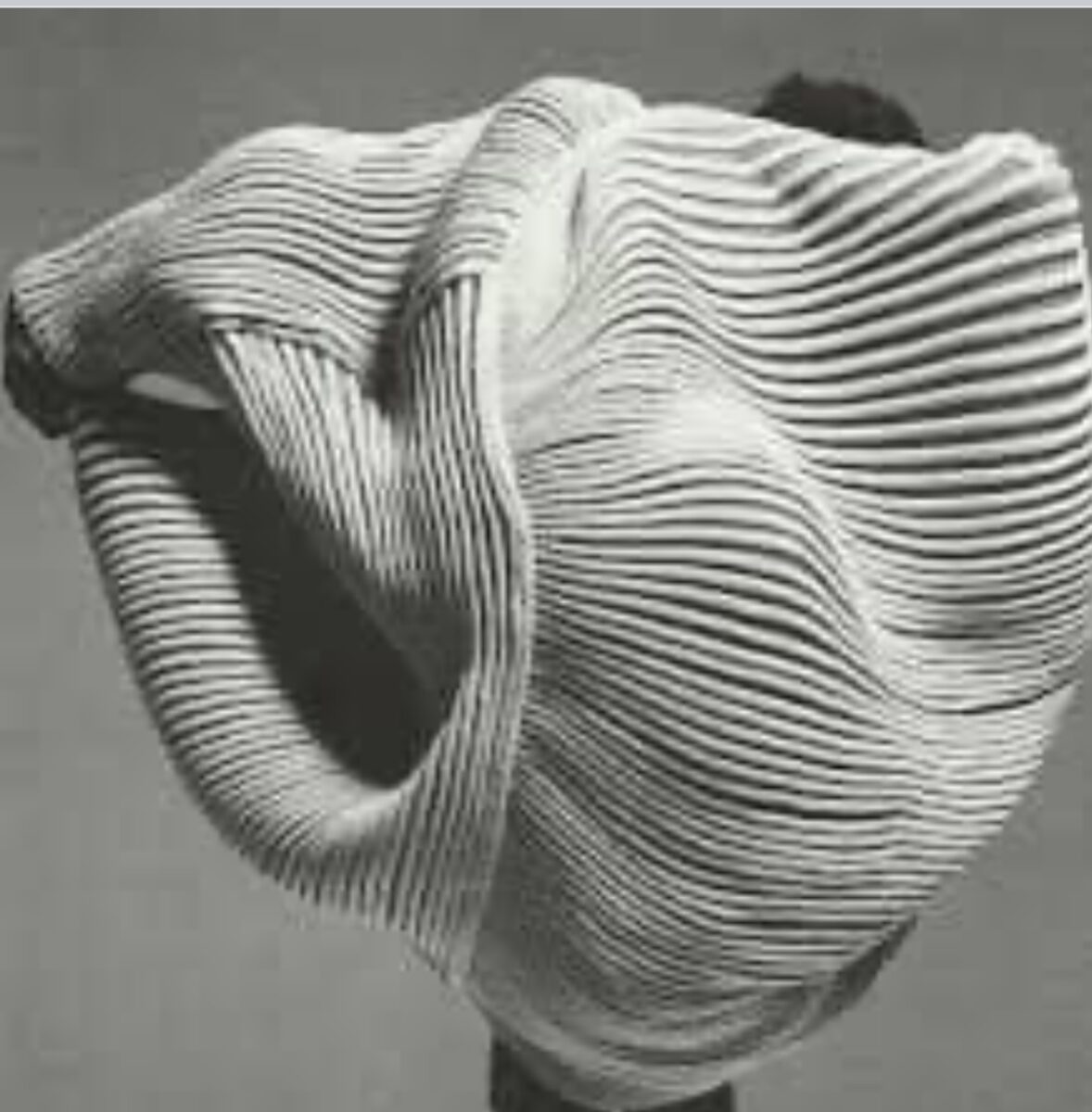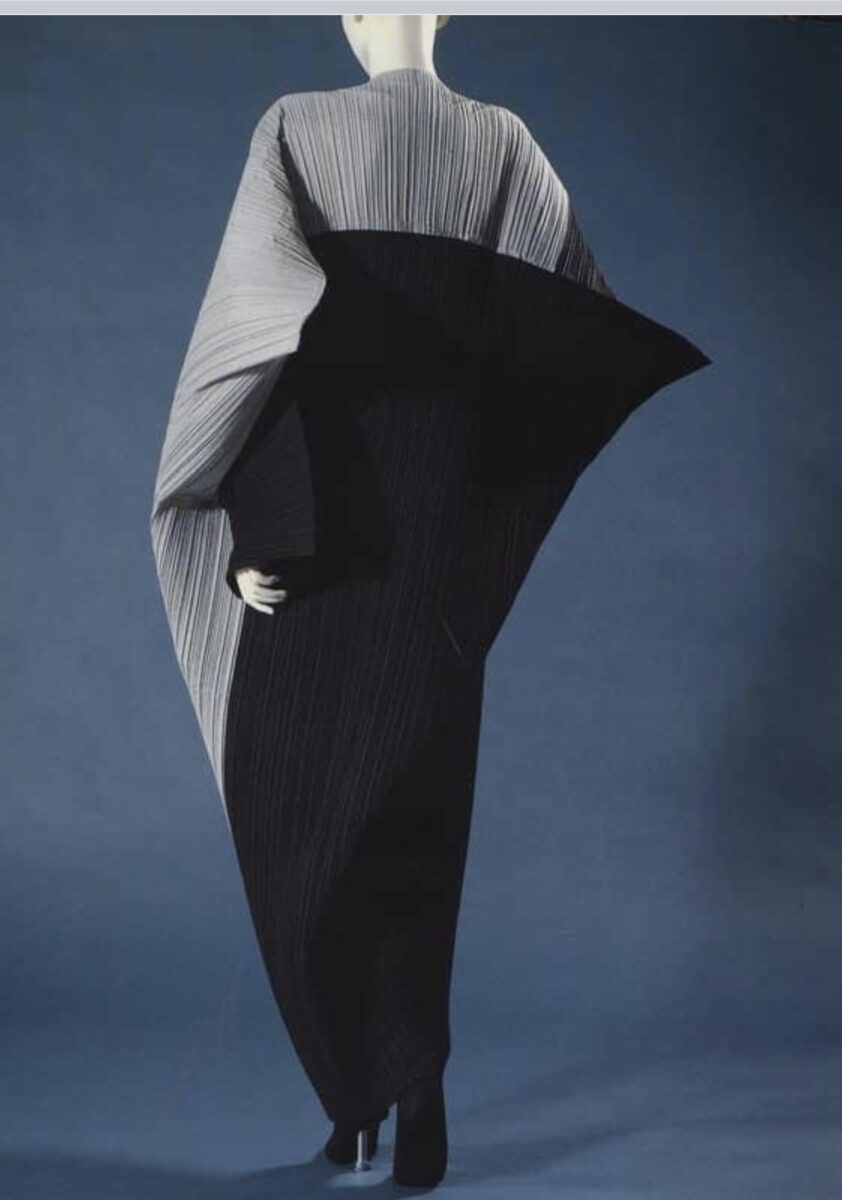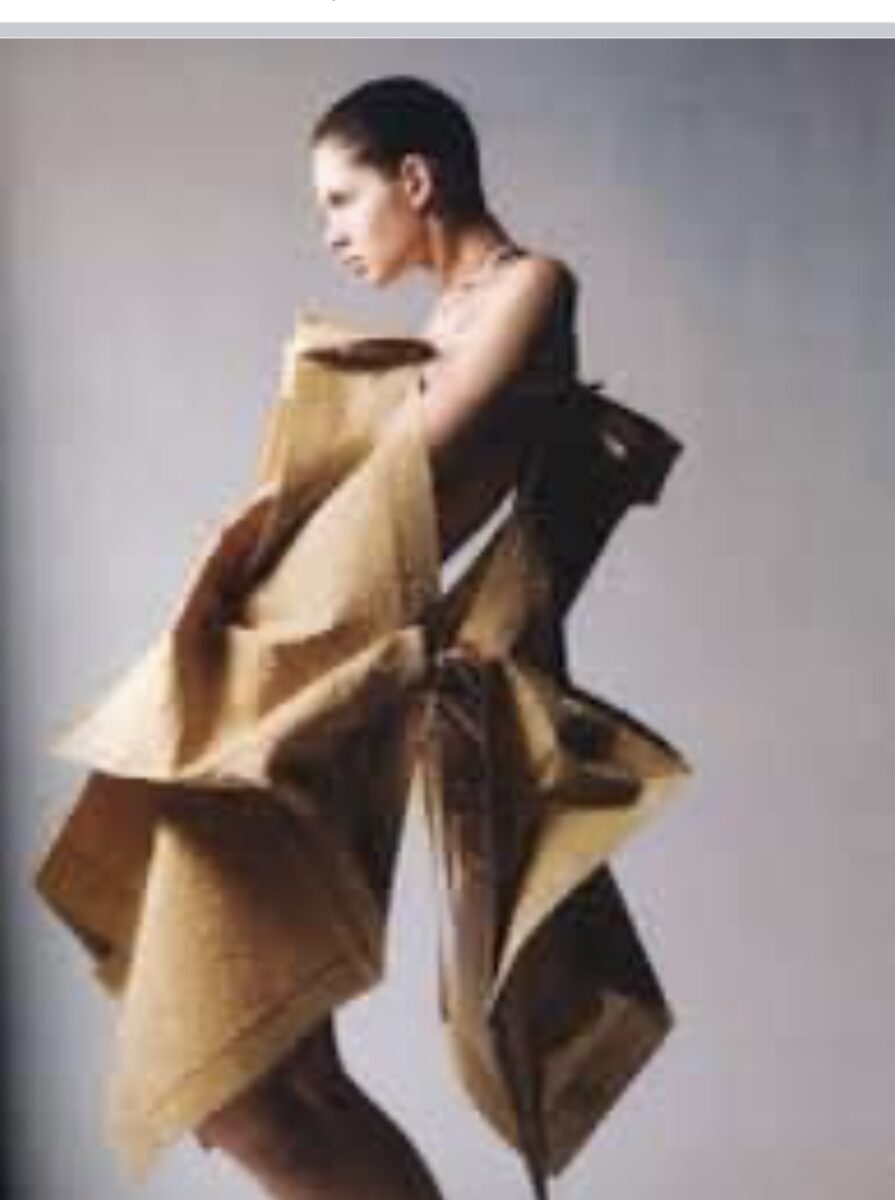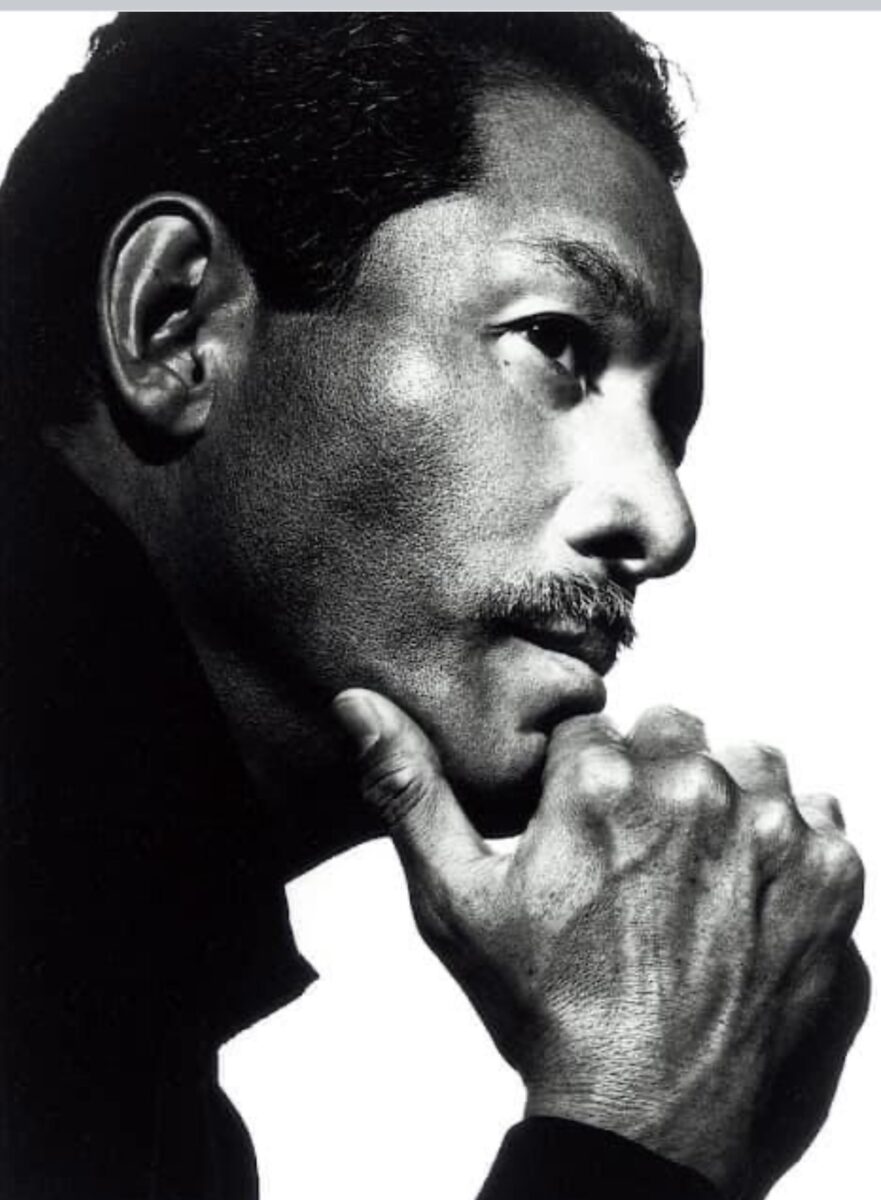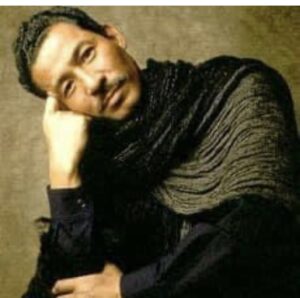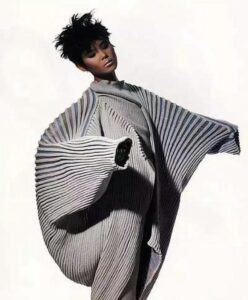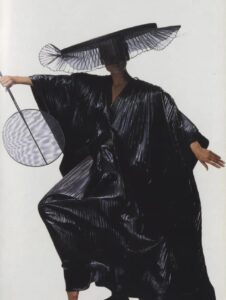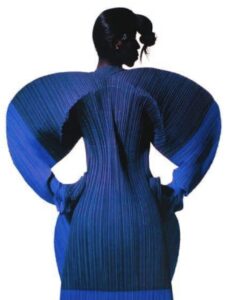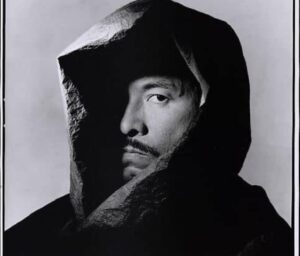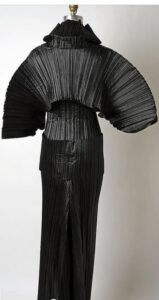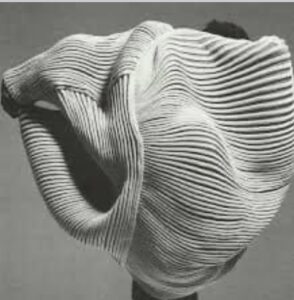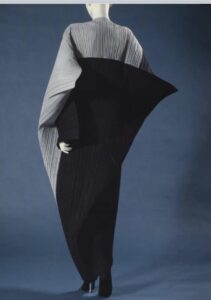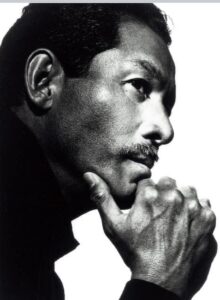Issey Miyake: A Genius of Clothing Design Embedded with the Human Spirit
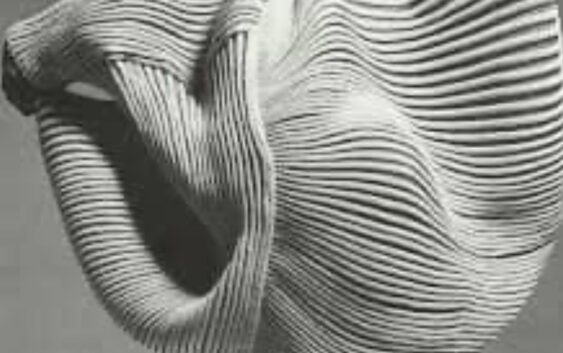
Issey Miyake: A Genius of Clothing Design Embedded with the Human Spirit
A giant of civilization has passed. Issey Miyake, the Japanese clothing designer, made a remarkable across-the-board impact on society with his creations, which showcased his capacities for innovation, passion, compassion, fearlessness, and humanity.
Born in 1938 in Hiroshima, he experienced firsthand the horrors of the atomic bomb in 1945, both physically and psychologically. But he determined that this tragic incident would not scar or identify him, and then and there chose the path of optimism over pessimism and beauty over ugliness. As a youth, he wanted to be a dancer or an athlete, but he was also fascinated and intrigued by his sister’s fashion magazines; however, to placate his father, he instead studied graphic arts in college. He entered his designs in a fashion contest after college, but without sewing or pattern-making skills, he did not win. He was intent on rectifying those defects, and so began his great adventures as he set off for Paris on a meager budget in 1965. There he studied haute couture under master designers Guy Laroche and Hubert de Givenchy, making 100-200 sketches per day under the latter. Miyake was also greatly influenced by the protests of students and workers in Paris in 1968 against capitalism, imperialism, consumerism, and the status quo. As a result, he determined he would be a designer of clothes, not fashion, for the everyperson, not just the rich. As he later said, “I do not create a fashionable aesthetic…I create a style based on life.” So, not only did he hone his technique in Paris but also he crystallized his life direction as well.
Moving to NewYork in 1969, he worked for another great, designer Geoffrey Beane, studying mass production techniques for fashion. He also met other artists including Robert Rauschenberg, Christo, and Andy Warhol. Miyake was forced to return to Tokyo in 1970 to deal with illness related to his exposure to radiation in the Hiroshima bombing. There, with financial help from friends, he was able to open Miyake Design Studio, and the rest is fashion history.
From the beginning, Miyake was his own man. His first show in Japan was a sensation and set the stage for what he would do the rest of his career. In the show, a model stripped off her clothing, layer by layer, until she was naked. This in staid Japan! This was only the beginning of his fearless moves.
Later was to come his famous and timeless pleated clothing, which allowed for freedom of motion and therefore freedom of the human spirit; this was his goal. Taking just one piece of fabric, he would work his magic and create a garment which could actually be worn in different ways to suit the occupant. In addition, he was continuously experimenting with new and unlikely materials for his designs, ever-learning and evolving his techniques of both creation and implementation.
He liked to begin with simple and classic Japanese themes in clothing, then brainstorm on their possibilities to create the final designs, and finally involve modern technology in their efficient production. The final work was thus an embracing and melding of all of his life experiences.
Indeed, Issey Miyake was a giant of talent and creativity and humanity.
His is an oeuvre without boundaries of age, gender, body-type, and nationality. The functionality, universality, and eternality of Issey Miyake designs reflect his inner spirit and hopes for the human species.
The eminent fashion designer Sue Wong was deeply saddened by the passing of Issey Miyake and had this to say:
“A Fashion GENIUS has transitioned. Issey Miyake has been one of my favorite designers for decades. I practically LIVE in Issey Miyake. Some of his pleated ponchos I have in every color!
I had the distinct honor of meeting him several decades ago at a dinner party at my friend Marylou Luther‘s house in Beverly Hills when she was the fashion editor of the LA Times. She had invited me, Issey Miyake, and the equally brilliant Rudy Gernrich and his partner for dinner.  It was the memory and experience of a lifetime—an evening filled with brilliant conversation and witty repartee. Issey Miyake was a design iconoclast, borrowing from his ancient Asian past and extrapolating his designs into the future. His pleated designs were pure architecture. They were avant-garde, yet completely functional and wearable. 
He shall be missed—a true pioneer and revolutionary who redefined FASHION as ART.”
See for yourself the wonder of Issey Miyake designs!



